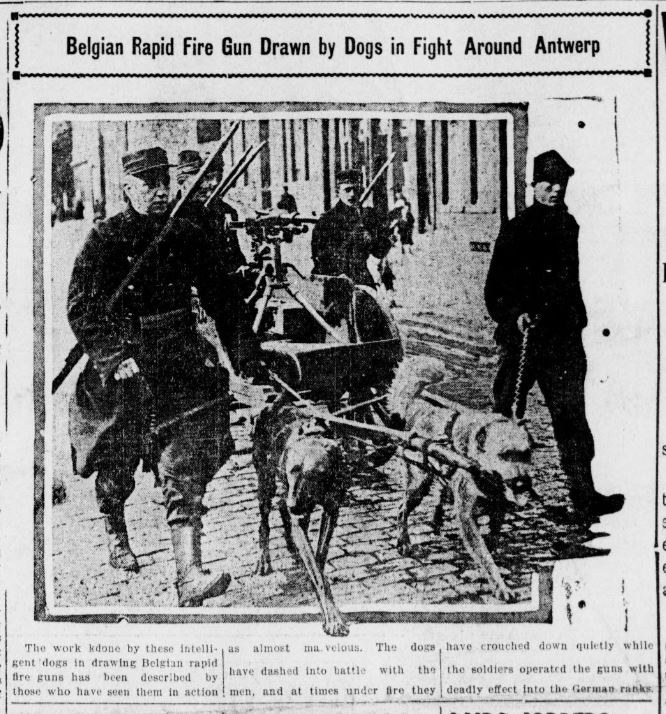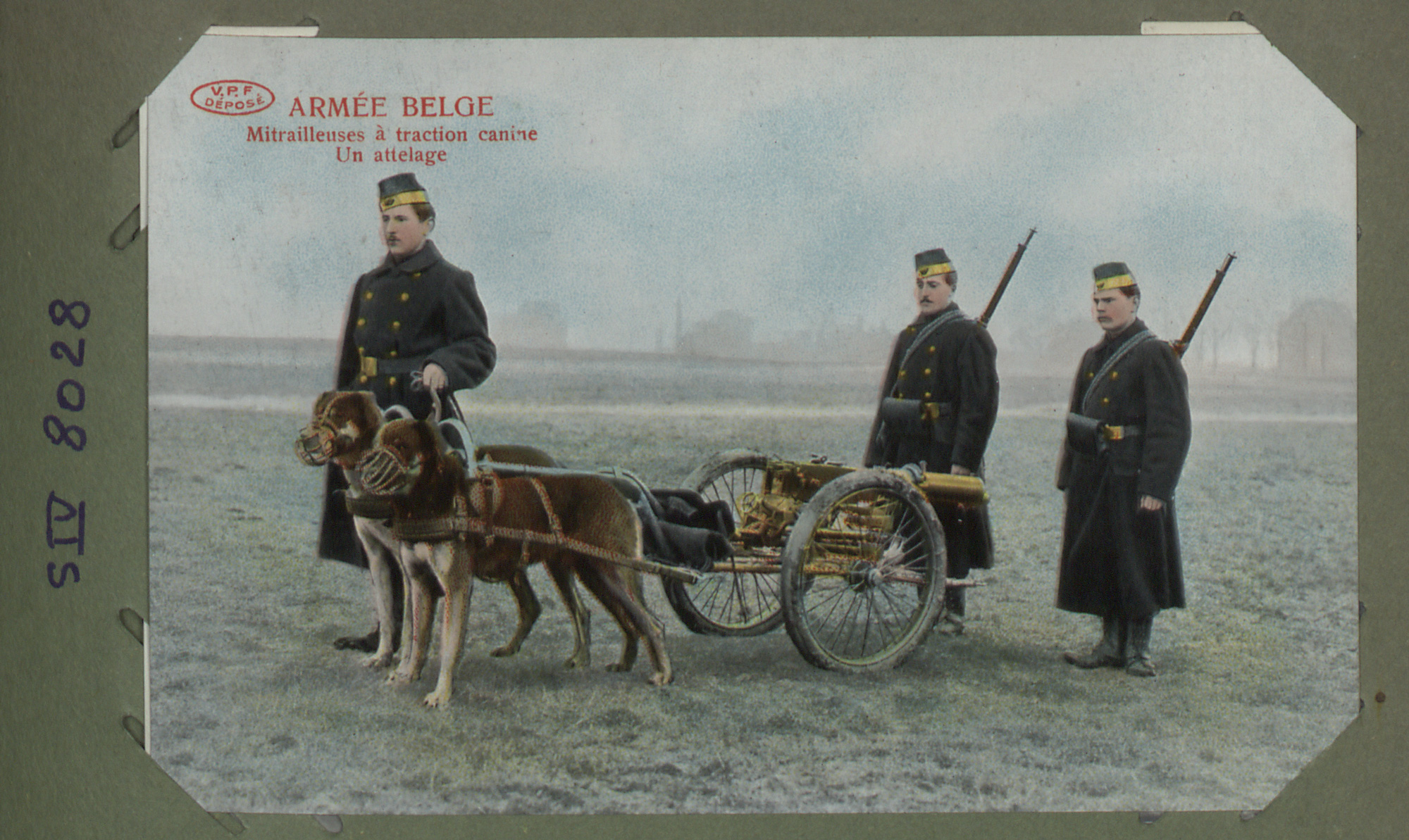From October 1914 and WWI was just getting started.
This was one tidbit of information I did not know. I even found a photo of a colorized postcard depicting a team of dogs with what appears to be a Maxim in tow.
And a bit of search turned out this:
The dogs used to pull the machine guns were Belgian Mastiffs, this strong breed were more than capable of drawing the 60lbs weight of a Maxim gun. At the time it was not uncommon for dogs to be used as pack animals in Belgium as they offered an efficient and economical alternative to expensive horses.
The dogs were able to pull the machine gun carriages that also carried some of the gun’s ammunition, weighing up to 200lbs, for long distances. They were quite capable of keeping up a 4 or 5 mile per hour pace over a long distance on a good road. The relatively cheap cost of pack dogs compared to horses, along with their relative lack of maintenance – with no need for horse shoes etc, made the dogs an excellent option. They also offered a much lower profile than that of a pack horse, allowing them to stay close to the guns ready to move under cover when in action, and were much easier to handle without the need for specially trained troops.
Historical firearms – BELGIAN MACHINE GUN DOGS
And that is one more thing I know. Interesting, but WWI changed how warfare was fought in so many way, we are bound to find strange things to our modern understanding.



“Dog cart” seems to be an old English term for a small horse-drawn carriage. That confused me when I first saw it, because in Holland, just as you showed here, small vehicles pulled by dogs were pretty common a century ago.
At the time it was not uncommon for dogs to be used as pack animals in Belgium as they offered an efficient and economical alternative to expensive horses. Unlike horses they could eat what the gunners killed.?
They also bred BIG dogs as guard dogs, so they had a ready supply of them, unlike the horses.
In WWII, most armies were still using horses and mules for logistics. The US Army “traveled with a used car lot full of vehicles”, and practically invented mechanized logistics.
The Imperial War Museum in London has a WWII Jeep that a US general gave to a British field hospital when he learned they didn’t have any ambulances.